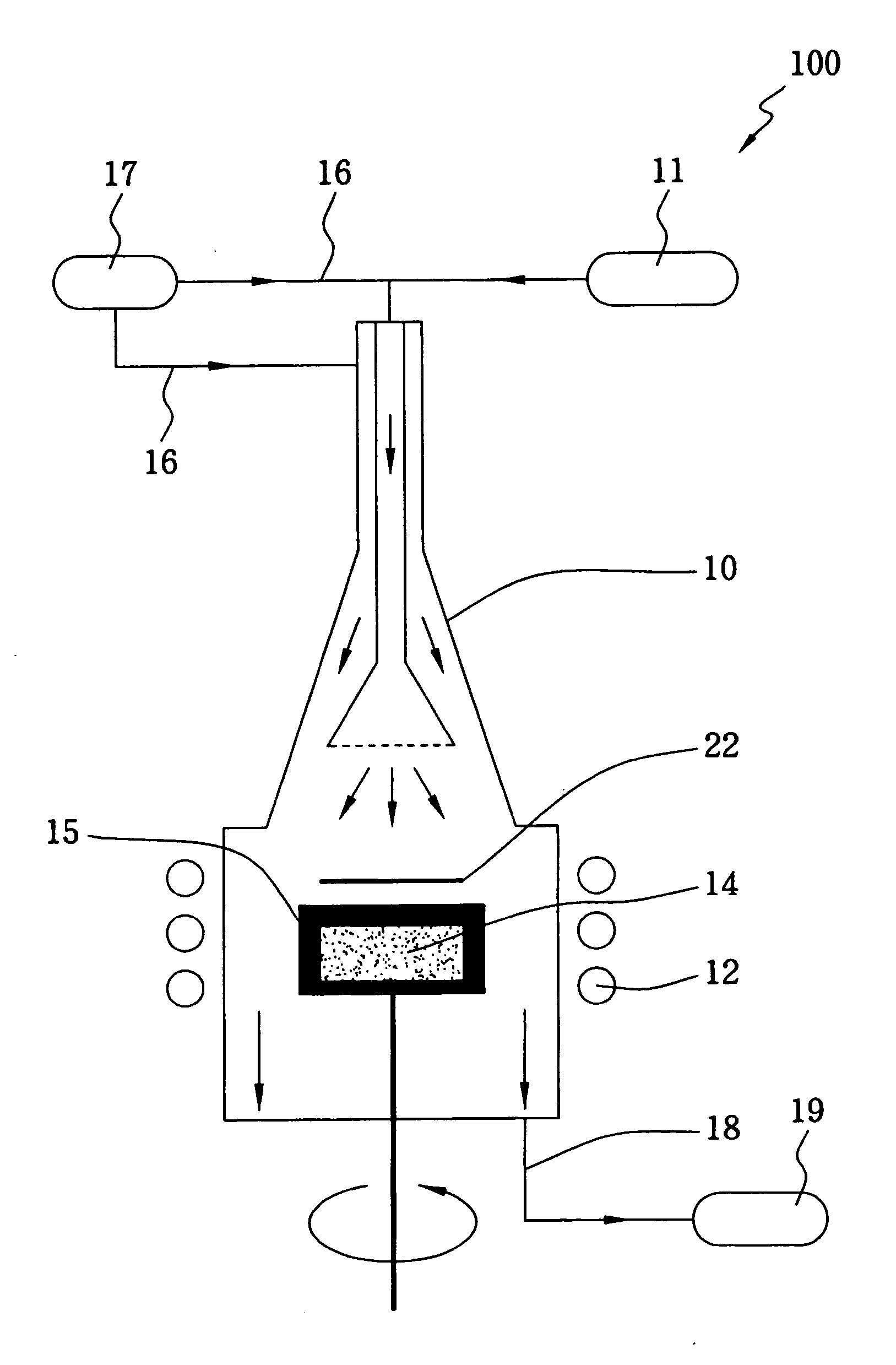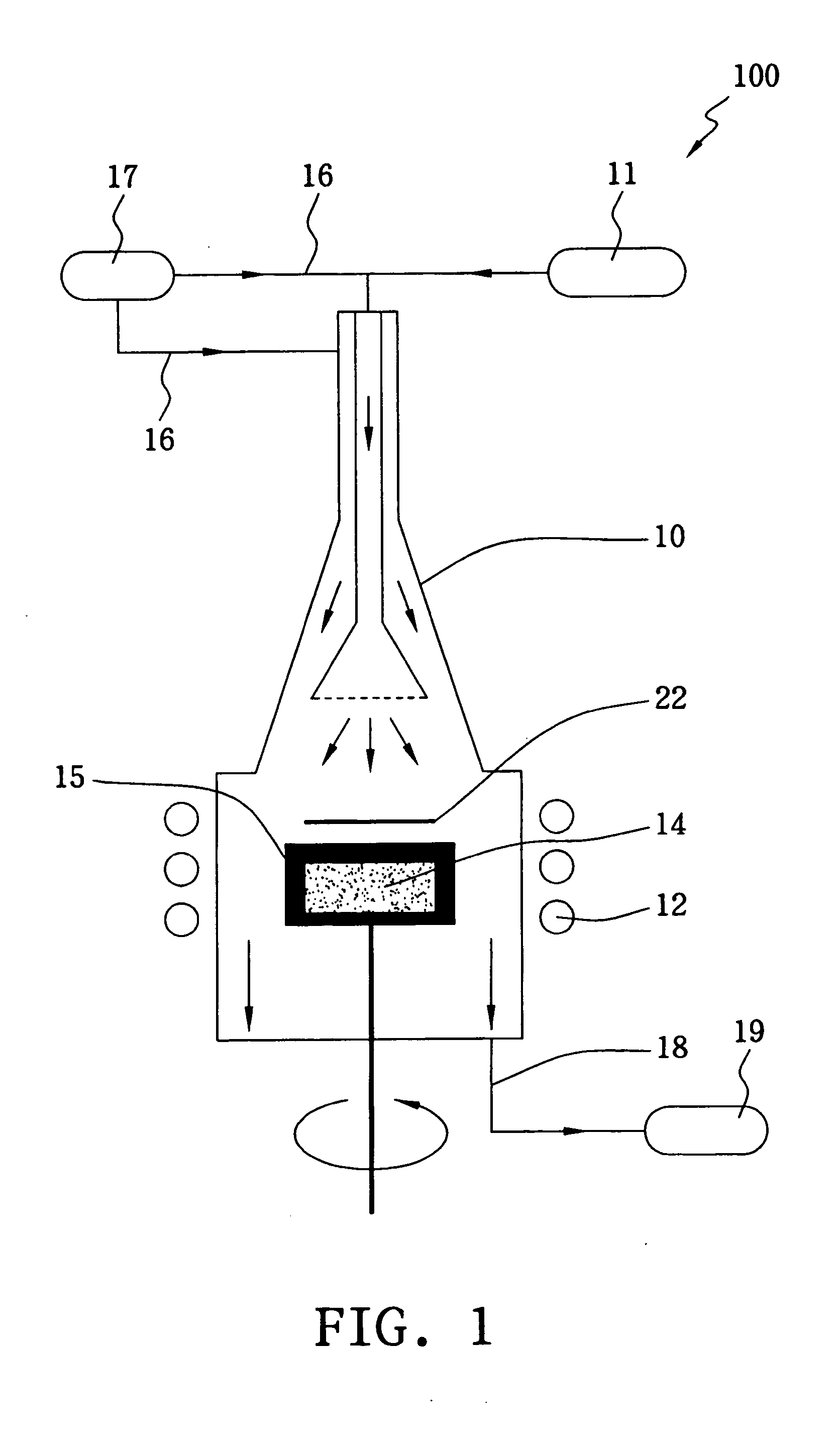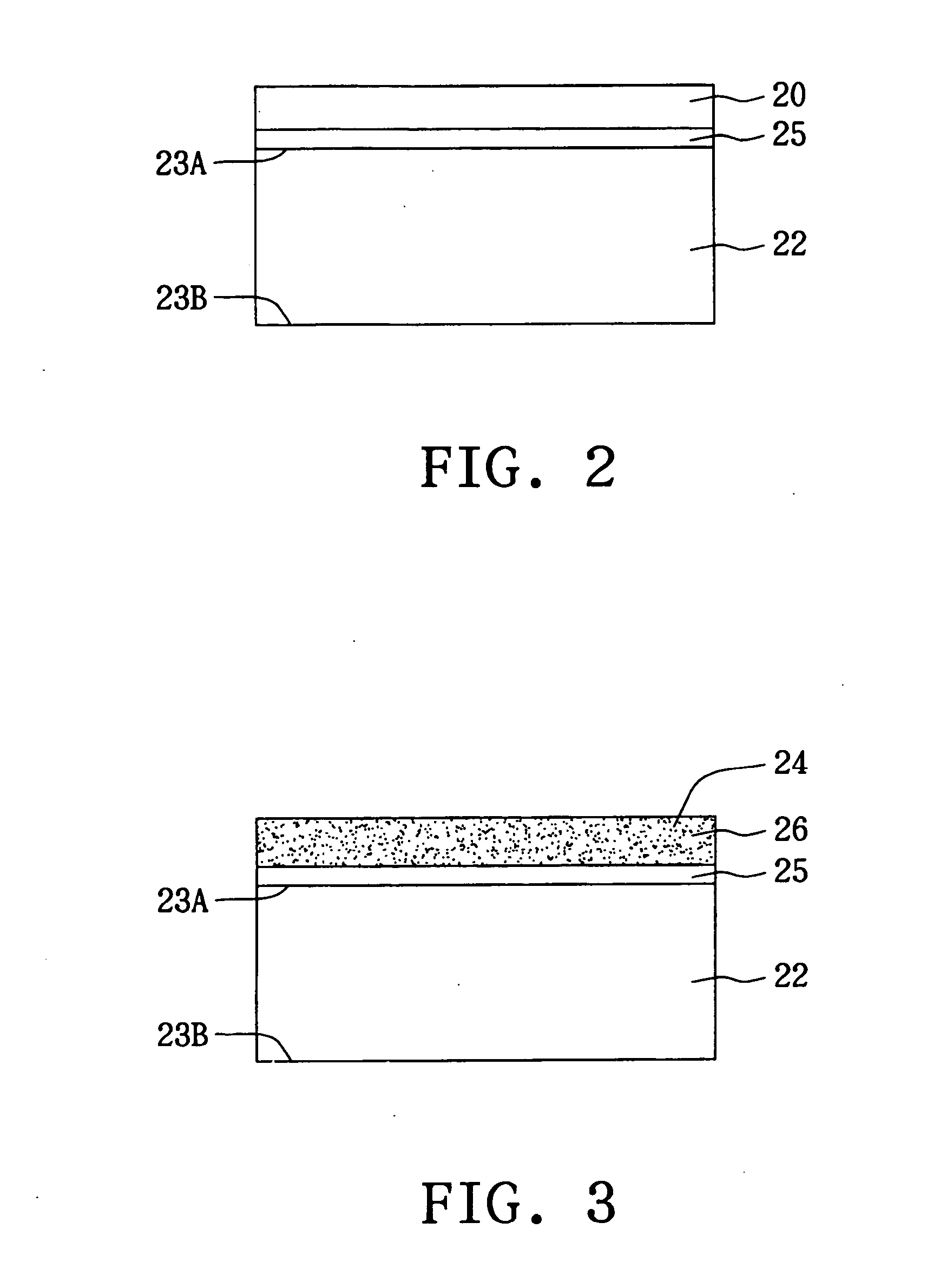White light-emitting device and method for preparing the same
a light-emitting device and white light-emitting technology, which is applied in the direction of discharge tube luminescnet screens, energy-saving lighting, sustainable buildings, etc., can solve the problems of low luminescent and phosphor conversion efficiency, inefficient light-emitting sources, and commercial optoelectronic products
- Summary
- Abstract
- Description
- Claims
- Application Information
AI Technical Summary
Benefits of technology
Problems solved by technology
Method used
Image
Examples
Embodiment Construction
[0022] The quantum confinement effect broadens the band-gap of materials as the size of the material becomes smaller, and the nanocrystal has a distinct photoelectric property from the ordinary crystal with a larger size. Therefore, besides the well-known porous silicon, researchers also attempted to prepare the silicon-based light source by generating silicon nanocrystals (Si—NC) in a highly stable silicon dioxide layer. However, silicon nanocrystals (Si—NC) in the silicon dioxide layer can only emit red light or infra-red light. The present invention prepares silicon nanocrystals (Si—NC) in a trisilicon tetranitride layer to emit a white light with a wavelength between 400 and 700 nanometers.
[0023] One of methods for preparing the Si—NC, which is capable of emitting red light or infra-red light, first forms a sub-stoichiometric silica (SiOx) layer with excess of silicon atoms by chemical vapor deposition (CVD), wherein the numerical ratio (x) of oxygen atoms to silicon atoms is s...
PUM
 Login to View More
Login to View More Abstract
Description
Claims
Application Information
 Login to View More
Login to View More - R&D
- Intellectual Property
- Life Sciences
- Materials
- Tech Scout
- Unparalleled Data Quality
- Higher Quality Content
- 60% Fewer Hallucinations
Browse by: Latest US Patents, China's latest patents, Technical Efficacy Thesaurus, Application Domain, Technology Topic, Popular Technical Reports.
© 2025 PatSnap. All rights reserved.Legal|Privacy policy|Modern Slavery Act Transparency Statement|Sitemap|About US| Contact US: help@patsnap.com



